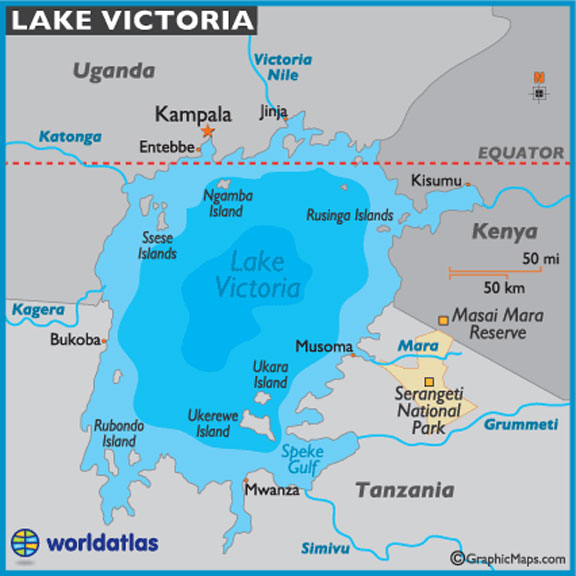The largest island national park in Africa, Rubondo Island lies in the southern part of Lake Victoria (the second-largest lake in Africa, after Lake Tanganyika). The island is 26km in length, and varies in width from 3km to 10km. The grassy Masa hills in the southern part of the island form a high point of 1,486m above sea level.
Rubondo has been almost untouched by tourism. It has, though, become a sanctuary for threatened wildlife and has seen many species introduced over the years.
Until the middle of the 20th century, Rubondo was home to a community of people whose livelihood was dependent on fishing. This all changed in 1965 when around 400 inhabitants were relocated and the Rubondo Game Reserve was formed.
Between 1966 and 1969 Professor Bernhard Grzimek from the Frankfurt Zoological Society introduced 16 captive-born chimpanzees to the island. Rescued from zoos and circuses across Europe, these animals were brought over in crates and relocated to Rubondo where they were given a new life in the wild. The chimpanzees clearly loved their freedom and quickly established a healthy breeding troop whose population today numbers over 40 animals.
Following on from this success, several other mammal species were introduced to the island, including elephants, giraffe, black rhinos and the rare suni antelope. Unfortunately due to poaching rhino are no longer found on the island. In 2000, 37 grey parrots that were victims of illegal trade were rescued and released on Rubondo. The parrots rapidly took to their island home and they can now found all over Rubondo.
Given that it is a small island, Rubondo is home to a surprising number of large mammals. Of particular interest are the wild chimpanzees that were introduced in the 1960s. The chance of spotting these is, at present, relatively slim, although we'd expect better sightings as they become more habituated to humans, researchers are currently there trying to habituate them.
Elephant and giraffe have breeding populations, although despite their size these animals are rarely seen. By contrast, sightings of hippos, crocodiles and even otters are relatively common.
Rubondo is also one of the best places in Africa to see the semi-aquatic sitatunga antelope, which commonly sighted in the swamps on the west coast of the island. Other mammals found on Rubondo include the nocturnal civit and genet as well as a number of antelope species that are found in the dense forest.
On the shores of the island, and smaller bodies of water inland, there are surprisingly high numbers of serrated hinged terrapins, a species native to the East African tropics. These terrapins lay their eggs between October and January with the hatchlings emerging between March and April.
Other smaller animals worth looking out for are butterflies. A large number of species are found on Rubondo, in part due to over 40 species of orchids that grow on the island.
Rubondo Island offers one of the best locations in Tanzania for bird watching. With over 300 species, birders will be in their element.
On visiting recently, we were struck by the pied kingfishers which we found in large flocks, numbering upwards of 50 birds. Open-billed and marabou storks are commonly sighted on the shores along with cormorants, darters and white egrets. Rubondo also seems to have a very high concentration of fish eagles.
The best time to visit Rubondo is during the dry season, between June and October. December through to February sees a large number of migrant bird species visit the island so for keen birders this can also be a great time to visit.
